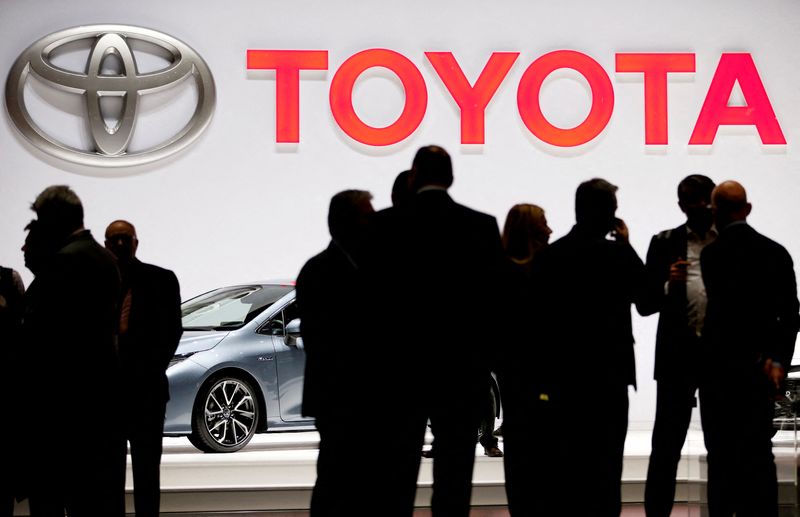Toyota profit to rise but eyes will be on its shaky supply chain, EV strategy
2022.10.30 23:59
[ad_1]

© Reuters. FILE PHOTO: A Toyota logo is displayed at the 89th Geneva International Motor Show in Geneva, Switzerland March 5, 2019. REUTERS/Pierre Albouy/File Photo/File Photo/File Photo
By Satoshi Sugiyama
TOKYO (Reuters) – Toyota Motor (NYSE:) Corp is expected to report a small quarterly profit increase on Tuesday, with soaring costs of parts and materials nearly offsetting the benefits from the plunging Japanese yen and a rebound in production.
The world’s biggest automaker by sales said last week its global production rebounded by 30% in the quarter that ended in September, but warned shortages of semiconductors and other components would continue to constrain output in coming months.
A gradual improvement in the auto chip shortage situation should help raise output in the second half of the current fiscal year, but investors’ focus will shift to demand outlook, other potential disruptions in the supply chain and its electric vehicle strategy when Toyota reports earnings.
“The point to look out for is why there has been such a gap in the supply chain process,” said Kohei Takahashi, an analyst at UBS Securities Japan, noting improvement in chip supplies.
“It has been too long for the same reason, so something new must be emerging,” he said.
Toyota warned earlier this month that it is unlikely to meet its 9.7 million vehicle production goal for this financial year due to a scarcity of chips. It did not provide a new forecast.
The company is expected to report a 3% increase in July-September operating profit to 772.22 billion yen ($5.3 billion), its highest since the December quarter, according to the average estimate in a poll of 12 analysts by Refinitiv.
It will be the first profit increase in three quarters and mark a big improvement from a sharper-than-expected 42% plunge in June quarter profit, partly helped by the yen which has further extended its loss.
The yen plunged around 30% this year against the U.S. dollar, boosting the value of Toyota’s overseas sales. Toyota adjusted its yen forecast for the year to 130 yen from 115 yen following the first quarter results, but the currency is now trading much lower at around 146 to the dollar.
The benefits of the cheap yen has been offset by soaring input costs. Toyota estimated in August material cost for the full year to be 1.7 trillion yen, a 17% increase.
Toyota’s shares are down about 2% this year, compared with the roughly 4% drop in the average.
Toyota and its major Japanese rivals, Nissan (OTC:) Motor and Honda Motor, are also grappling with longer term challenges including their slow push into electric vehicles.
Just a year into its $38 billion EV plan, Toyota is already considering rebooting it to better compete in a market growing beyond its projections, Reuters reported this month.
It also had to recall its first mass-produced all-electric vehicle after just two months on the market due to safety concerns earlier this year. It restarted taking leasing orders this month.
($1 = 146.4200 yen)
[ad_2]
Source link








